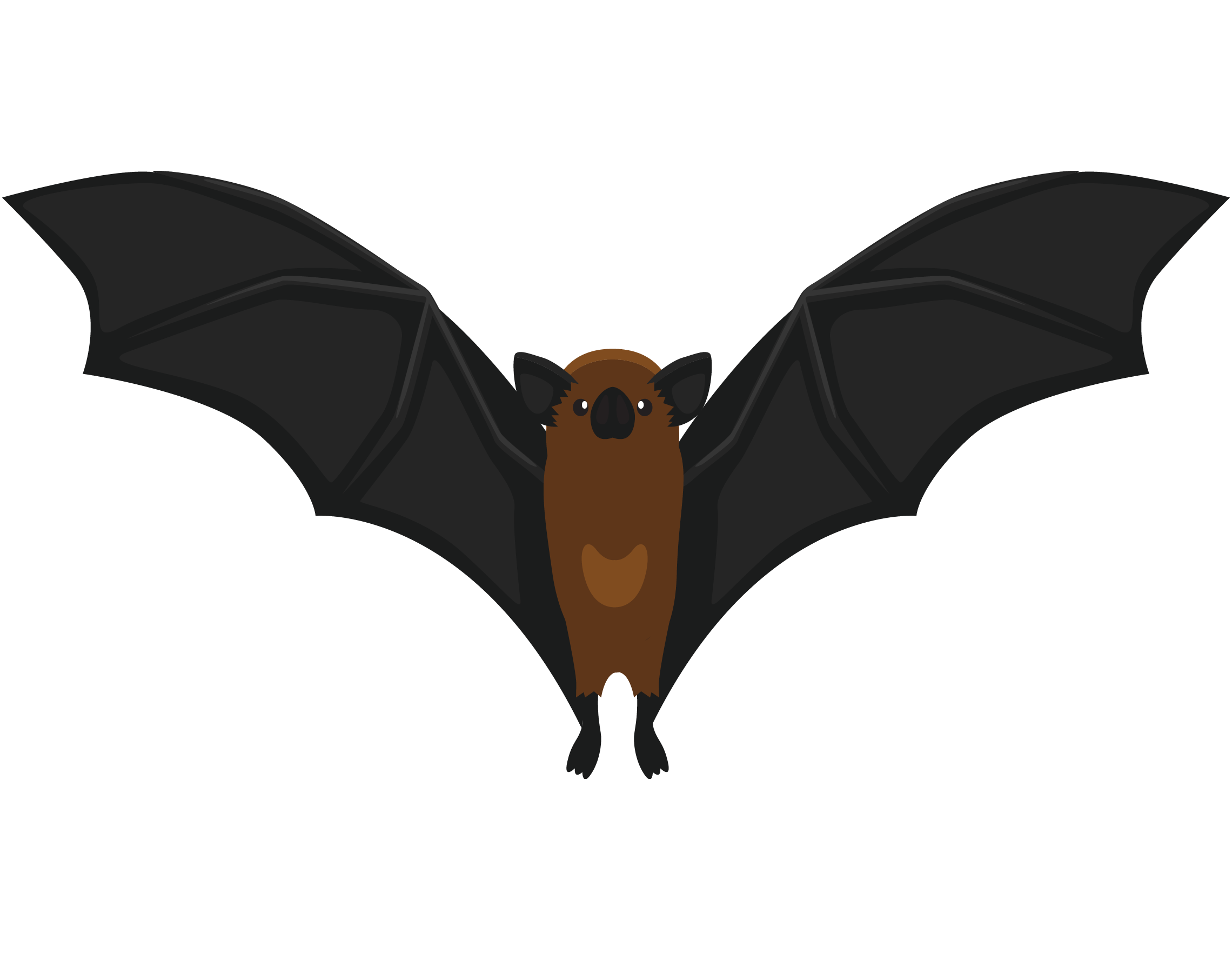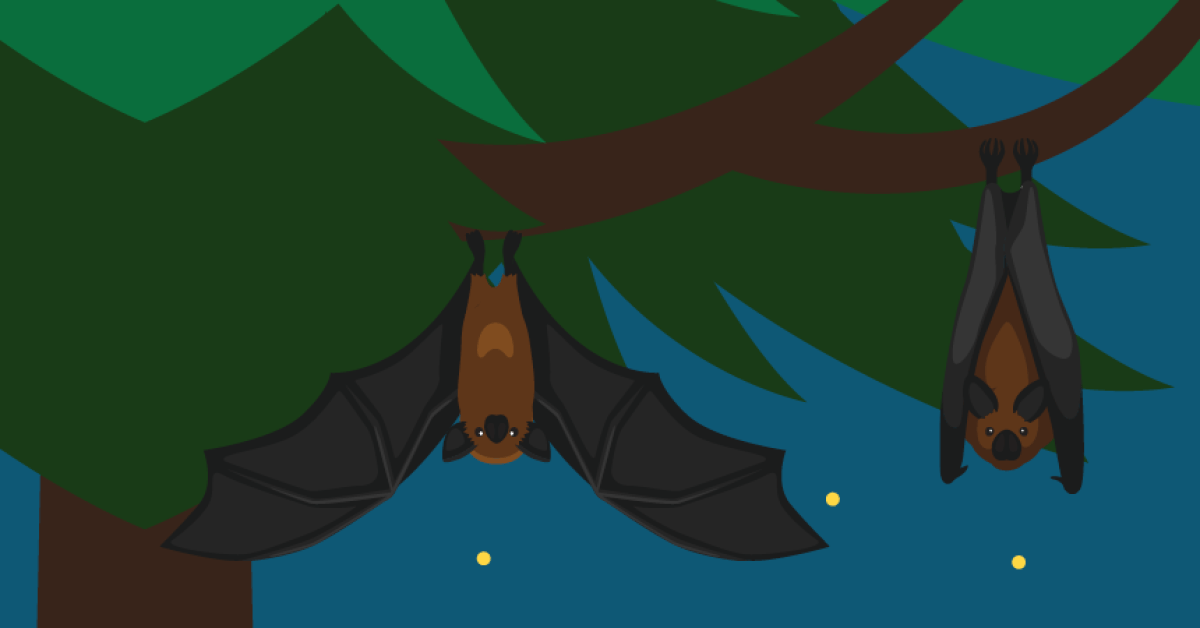Many people celebrate Bat Week every year between October 24–31. During this week, we’re encouraged to learn and share all the ways that bats support our ecosystems, as well as the threats they face. This is especially important for kids, who may not realize just how prevalent and helpful bats are—or might associate them with scary things like vampires!
BC Hydro operates and has impacts in regions which are home to a diverse population of bats. That’s why we encourage teachers to learn more about bats and incorporate them into classroom learning during Bat Week. We’ve rounded up some info, activities, and resources for you to put a spotlight on these nocturnal creatures.
Appreciating bats for what they do
To put it simply, bats are very cool. Bats are the only flying mammal, and in fact, 20 percent of all mammals in the world are bats. Some bats can fly at the speed of a car, and some bats can live for over 30 years. They come in many shapes and sizes, from bats that fit in the palm of your hand, to bats up to six feet long. They use echolocation to navigate in flight, but contrary to popular belief, they often have good eyesight.
Even though we may only notice bats swooping around in the dark of night, bats support our ecosystems in many beneficial ways. Many bats eat insects and other pests, sometimes eating their own body weight in bugs in a single night. Meanwhile, the droppings they leave behind are excellent fertilizer for crops. Some bats live on a diet of fruit or nectar, which makes them wonderful pollinators and seed-sewers. Bats are essential to the cultivation of bananas, cocoa, avocados, and other crops.
Bats are facing serious threats and are endangered in many places. They’re susceptible to a fungus which causes White Nose Syndrome. They can also be harmed by the pesticides and insecticides we use on crops, despite being excellent hunters of pests and insects themselves. Habitat loss and climate change are making it harder for them to thrive as they are impacted by human activity. Meanwhile, in some places, bats are captured as food.
Like birds and bees, bats are critical to our ecosystems in B.C. and beyond, but they are being threatened mostly because of human activity. Bat species have been endangered and in decline in many places, but they’ve also bounced back when conservation efforts are in place. We encourage you to make your students part of the generation that will protect and support bats into the future.

Being a bat ambassador
The first step in protecting bats is to learn more and spread awareness of how important they are. Teach students to appreciate bats instead of fearing them, although we should always stay safe and keep a distance around any wildlife.
Like with many things in nature, the most helpful thing you can do is preserve bat habitat and leave them be. Bats roost in safe dark spaces like hollow trees and caves. Keeping these types of nooks when it’s safe to do so and not disturbing them, especially in winter when some bats are hibernating, is a big help to them.
Another great step is to avoid the use of pesticides. On top of being harmful to bats, pesticides kill all the bugs that bats love to eat! When possible, maintaining a garden of native species and taking care of it naturally without pesticides will allow bats to play their role as insect hunters. They’re also going to help by pollinating the plants, and some of them will even live on the pollen and nectar.
If you want to get more crafty, you can build a bat home to give them a safe place to roost. This is a great option if you have property which you can share with bats, or if you are able to make space on a schoolground for one.
Staying safe around bats
As with all wildlife, students should learn to appreciate bats while also avoiding contact with them. Bats generally do not attack humans, but their fast movements when swooping down to eat insects or escape danger can occasionally cause them to come into contact with people.
Bats in B.C. can carry rabies. Minors should never handle wild bats, and even adults should only do so with the proper protection if they feel comfortable. Anyone that comes into inadvertent contact with a wild bat, such as being scratched or grazed, should seek preventative treatment for rabies right away. Most bats do not carry rabies, but anyone at risk must seek treatment before symptoms appear, as treatment does not work after developing symptoms.
Bats found roosting in the wild or in unintrusive places around the home should be left alone when possible. If you are having a problem with bats, you can call the BC Conservation Officer Service at 1-877-952-7277. For more information on dealing with bats and other wildlife, visit the WildSafeBC website or download their BC Bats brochure.
Activities for Bat Week
Power Smart for Schools features the Bat protection unit, which includes three activities tailored for the Grade 3 curriculum. This interactive unit will teach students why bats are important in our ecosystems, what dangers they face, and how we can protect them.
- Bats and biodiversity — Through cloud maps and games, students discover fun facts about bats and the role they play in our ecosystems. They will watch a video about bats and learn how we can protect them.
- Bats in the field — Students will play a game to see how bats help farmers and their crops.
- Bat skits — Students will create and perform skits to teach other about protecting bats while having fun and getting out of their seats.
Outside of our website, we also recommend this activity as a class project:
- Bat House in Your Backyard – These detailed instructions from the Canadian Wildlife Federation explain what kind of home bats like to live in and how to create your very own bat house. Building a bat house as a class or in groups, then installing them near the school, would be a great way to show your students how to help bats.

Recommended videos
This brief video from National Geographic helps to explain why bats are important for humans. It also looks at where bats became associated with scary stories, and how human impacts on bats contribute to their reputation for spreading diseases.
This short but exciting documentary highlights the critical role bats play in the ecosystem of Mexico, including the production of corn, coffee, and agave. It also highlights the threats they face such as habitat destruction and being trapped by some locals.
A spotlight on bats from the Okanagan, the region with the most diverse population of bats in Canada. In the spirit of Bat Week, this video talks about the yearly life of bats and local activities to support them.
Recommended websites
Learn more about bats in B.C. and the initiatives to support them. Learn how to get involved, and consider having your classroom participate in a project.
Read about the importance of bats on the official website of Bat Week. Make sure to visit the homepage to see a list of Bat Week events going on all around the world, including in Vancouver.
A fun and easy-to-read list of facts about bats, designed for kids.
This encyclopedia article is a great source of information about bats, especially if your students are putting together a project on bats. At the top-right of the page you can toggle the article for three different age groups, each tailored with the appropriate complexity for different classrooms.








